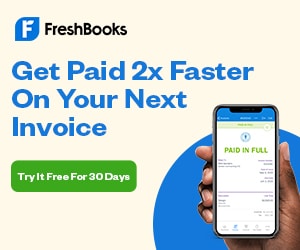In 2018, 6 years after I started out as a freelancer, I became a six figure translator. Trust me when I say no one was more surprised than me as I reached that goal.
I was probably in the top 1% of translators in terms of yearly income, but I was not a public figure. I wasn’t giving courses, presenting at conferences or bragging about this result on my profiles. I was simply following a basic system, which did not have room for mainstream advice about freelancing.
In fact, I crossed the six-figure mark without ever:
- Charging top 1% rates
- Making a social media post about my business
- Actively networking with colleagues
- Using a website or a blog to attract leads
What was I doing then? I was using 5 simple tactics.
1. I was extremely productive (so I didn’t need to charge top 1% rates)
To date, I have never charged any client more than €0.15/word. My rates are solid, but not crazy high – usually in the €0.09 to 0.12 per-word range. My secret? I was – and I still am – extremely productive.
The average translator can do 2,000 to 3,000 new words per day. I can easily do 5,000, and can get as high as 8,000 if needed.
Something interesting happens when you are this productive.
If you can only translate 2,500 words per day, assuming you are working 48 weeks per year, you’ll need to charge €0.17 to get to six figures. As a translator, finding clients who can pay that much is difficult.
You need to work with direct clients only, you need to do constant marketing, outreach, content, networking and a number of other things. This, to me, always sounded like a lot of work.
If you can translate twice as many words per day, though, you only need to charge €0.09/word. This is a price most good translation agencies can pay – you simply white label your services to them, show them that your work is worth the price, do the job and deliver on time.
Boring? Yes. Effective? Just as much.
2. I was pretty easy to find
Studying the basics of SEO, I understood pretty quickly that I wouldn’t be able to rank a website for the terms clients would use to find me. Paying someone to do that for me wasn’t an option either, as I’d be fighting with translation agencies with a budget 100 times bigger than mine.
As I wanted leads to come to me, that opened a dilemma – how could I do that without a website? The answer was simple, and it involved two channels:
- LinkedIn – I paid someone to optimize my profile to include my language pair and areas of expertise and write some decent copy. My LinkedIn profile was not too complex, just 4 to 500 words of copy about what I did. It has generated 5 to 6 clients every year for years.
- Proz.com directory – the Proz.com directory is the main directory in the world for translators. Translation buyers use it every day to find translators for their projects! I worked hard for 2 years to rank as high as possible in the directory, and it worked amazingly, providing a steady stream of leads since.
My two lead generation channels were meant to attract localization managers at direct clients in my niches and vendor managers of translation agencies in general. And they ran like clockwork.
3. I acted like a human being – which paid back in referrals
This advice was not banal years ago, and it’s even more relevant in the days of AI.
In all my communication with clients, past and present, I acted like a human being. I wasn’t just accepting projects and sending them back. I was asking the client how their holidays were, what the weather was like, if they had plans for the weekend.
You know, normal questions people ask.
I didn’t do it for business reasons, and I beg you not to start with that purpose in mind. I did it because I wanted to have a good relation with them.

If you have been a freelancer for more than 3 days, you know it gets pretty solitary. I simply craved human connection and was genuinely curious to get to know who was on the other side of the screen.
Unexpectedly, this curiosity turned into a marketing vehicle. I can’t count the number of times someone reached out saying I had been recommended by a colleague or friend. They were often amazing clients.
In hindsight, it makes sense – if you communicate through emails all day, then your emails start to define your personal branding, much more than your social profiles or websites.
4. I started pitching
Once my rates had grown significantly, my conversion rate (the number of leads who actually turned into customers) went down accordingly.
I realized I had reached a plateau.
Don’t get me wrong – at $60,000 to 80,000 per year, I could have stopped there. But I had a six figure goal in mind, and I was determined to reach it.
Cold email pitches ended up being the perfect tool to break the plateau.
The approach I followed was pretty simple – a couple of times per year, I identified a highly targeted group of boutique agencies or direct clients in an area I wanted to pursue, then reached out to them.
I never sent a huge number of pitches – whenever I applied this tactic, my list was probably in the 30 to 60 contacts range. I did, however, use different techniques to otimize my emails to a T.
I A/B tested subject lines. I sent 100-word emails as well as 500-word ones. I tried different hooks and I changed my call to actions.
Slowly but surely, in a couple of years I went from basically no results to a 25% response rate.
The clients that I got through pitches were (almost) always my highest-paying ones.
5. I always invested in my business
As freelancers, we know very well a DIY approach does not guarantee the same results a professional would offer. That’s why I chose to focus on what I knew – translation – and outsourced everything else to qualified pros. Over the years, I paid for:

- CV writing
- Email campaign setup
- LinkedIn profile optimization
- Website creation
- Business card design
I even had an infographic resume designed that cost me $2,500 and never got me a single client – but that is a different story.
The point here is not what worked and what didn’t. The point is that if you are running a business, you should treat it as such.
Investing in memberships, online courses and promotional materials wasn’t cheap, but it allowed me to get access to clients I never would have imagined without spending money first.
Key takeaways
You may be tempted to think the successful freelancers in your field are those with a huge following. The ones that wrote books about your profession, or are giving courses to newcomers.
You probably think that if you want to be successful you have to do what they are also doing. Posting on social media as often as they are, giving presentations at conferences, having websites that look (and probably are) expensive or implementing complex lead generation strategies.
I know, because I used to think the same.
The truth, though, is quite different – in my experience, becoming a six figure freelancer is easy.
You just need to be good at what you do – and if you are not, work to get better over time – and develop a system to generate and nurture leads.
Next time, we are going to discuss exactly how to build such a system.
Keep the conversation going...
Over 10,000 of us are having daily conversations over in our free Facebook group and we'd love to see you there. Join us!


